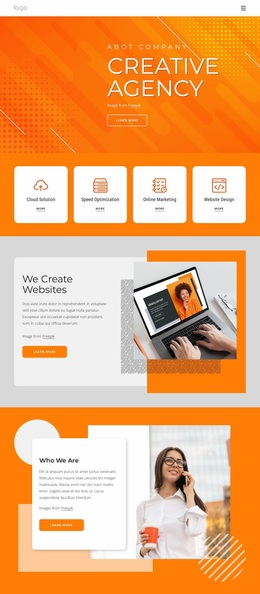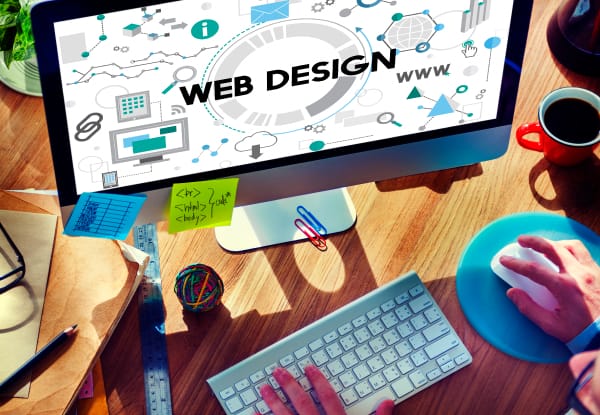How to Optimize Your Website Design for Faster Page Speeds
Crucial Principles of Website Layout: Creating User-Friendly Experiences
By focusing on individual requirements and preferences, developers can cultivate involvement and fulfillment, yet the effects of these concepts extend past simple functionality. Understanding just how they intertwine can significantly influence a site's general performance and success, triggering a more detailed evaluation of their specific roles and collective impact on user experience.

Significance of User-Centered Design
Focusing on user-centered layout is essential for creating reliable internet sites that satisfy the requirements of their target audience. This approach places the customer at the center of the layout procedure, making certain that the internet site not just operates well but also resonates with individuals on an individual level. By understanding the customers' goals, actions, and preferences, developers can craft experiences that cultivate interaction and complete satisfaction.

In addition, adopting a user-centered style viewpoint can bring about improved access and inclusivity, satisfying a varied audience. By taking into consideration various customer demographics, such as age, technological efficiency, and social backgrounds, designers can develop web sites that rate and practical for all.
Inevitably, focusing on user-centered design not only improves customer experience but can likewise drive crucial organization outcomes, such as enhanced conversion rates and consumer commitment. In today's affordable electronic landscape, understanding and focusing on individual requirements is an important success element.
Intuitive Navigation Frameworks
Reliable internet site navigation is frequently an important consider boosting customer experience. Instinctive navigating frameworks make it possible for customers to locate details quickly and efficiently, decreasing disappointment and boosting interaction. A well-organized navigation menu must be basic, rational, and constant across all pages. This permits customers to prepare for where they can find particular material, thus advertising a smooth browsing experience.
To create instinctive navigation, developers must prioritize quality. Labels should be acquainted and descriptive to customers, preventing jargon or uncertain terms. A hierarchical framework, with primary groups resulting in subcategories, can better aid individuals in understanding the connection between various sections of the site.
Furthermore, incorporating aesthetic cues such as breadcrumbs can assist users with their navigation path, permitting them to quickly backtrack if required. The inclusion of a search bar additionally enhances navigability, approving customers direct accessibility to content without having to browse through several layers.
Responsive and Flexible Layouts
In today's digital landscape, making sure that internet sites work seamlessly throughout various devices is crucial for customer complete satisfaction - Website Design. Responsive and flexible designs are 2 key methods that allow this functionality, satisfying the varied variety of display dimensions and resolutions that customers might experience
Receptive formats employ fluid grids and versatile images, enabling the site to immediately change its components based upon the display measurements. This strategy gives a consistent experience, where content reflows dynamically to fit the viewport, which is particularly useful for mobile users. By utilizing CSS media queries, designers can create breakpoints that optimize the layout for different devices without the need for separate designs.
Adaptive designs, on the other hand, use predefined designs for certain screen sizes. When an individual accesses the site, the server spots the device and serves the ideal format, making certain a maximized experience for differing resolutions. This can cause faster packing times and improved efficiency, as each design is tailored to the device's capabilities.
Both responsive and adaptive layouts are essential for enhancing user interaction and complete satisfaction, inevitably adding to the internet site's overall effectiveness in satisfying its purposes.
Regular Visual Power Structure
Establishing a constant visual pecking order is critical for leading customers through a web site's web content. This principle makes certain that info is provided in a about his way that is both user-friendly and appealing, permitting individuals to conveniently understand the material and browse. A well-defined power structure utilizes numerous style components, such as size, shade, spacing, and contrast, to produce a clear difference in between different sorts of content.

Furthermore, consistent application of these aesthetic cues throughout the internet site cultivates experience and trust fund. Individuals can rapidly find out to acknowledge patterns, making their interactions extra reliable. Ultimately, a solid aesthetic pecking order not only boosts individual experience yet also improves general website advice functionality, motivating much deeper interaction and facilitating the preferred actions on a website.
Ease Of Access for All Customers
Accessibility for all customers is a basic element of site design that ensures everyone, despite their disabilities or capabilities, can involve with and advantage from on-line web content. Creating with access in mind includes carrying out methods that suit varied individual requirements, such as those with visual, auditory, electric motor, or cognitive impairments.
One essential guideline is to comply with the Internet Content Access Guidelines (WCAG), which offer a structure for creating accessible digital experiences. This includes making use of sufficient shade contrast, offering message choices for images, and ensuring that navigating is keyboard-friendly. Additionally, using receptive layout strategies guarantees that web sites operate efficiently across numerous gadgets and screen dimensions, additionally enhancing accessibility.
One more critical variable is using clear, concise language that prevents jargon, making material understandable for all individuals. Engaging users with assistive technologies, such as display visitors, needs careful interest to find out this here HTML semantics and ARIA (Easily Accessible Abundant Internet Applications) duties.
Eventually, focusing on ease of access not only fulfills legal obligations yet additionally increases the audience reach, fostering inclusivity and boosting customer satisfaction. A dedication to ease of access reflects a devotion to producing fair digital environments for all individuals.
Final Thought
Finally, the vital principles of website style-- user-centered style, user-friendly navigation, responsive layouts, regular aesthetic hierarchy, and access-- collectively contribute to the production of user-friendly experiences. Website Design. By focusing on customer demands and making certain that all people can efficiently involve with the website, developers enhance usability and foster inclusivity. These concepts not only improve individual complete satisfaction however additionally drive favorable organization end results, eventually showing the vital importance of thoughtful web site design in today's digital landscape
These techniques offer important understandings right into individual expectations and discomfort points, making it possible for developers to customize the site's attributes and content accordingly.Reliable internet site navigation is usually an important factor in improving individual experience.Establishing a consistent aesthetic hierarchy is crucial for directing users via a web site's web content. Ultimately, a strong aesthetic pecking order not only enhances individual experience but likewise enhances total website usability, urging deeper involvement and promoting the desired actions on a website.
These principles not only improve individual complete satisfaction but also drive favorable service end results, ultimately demonstrating the vital significance of thoughtful website layout in today's digital landscape.